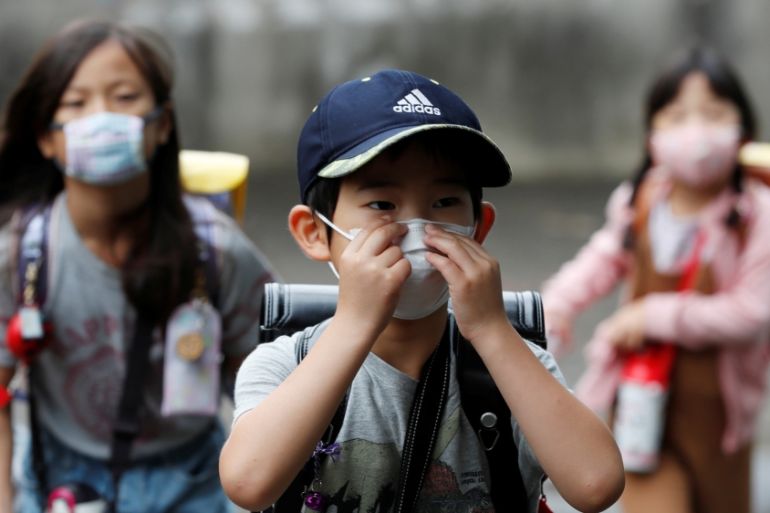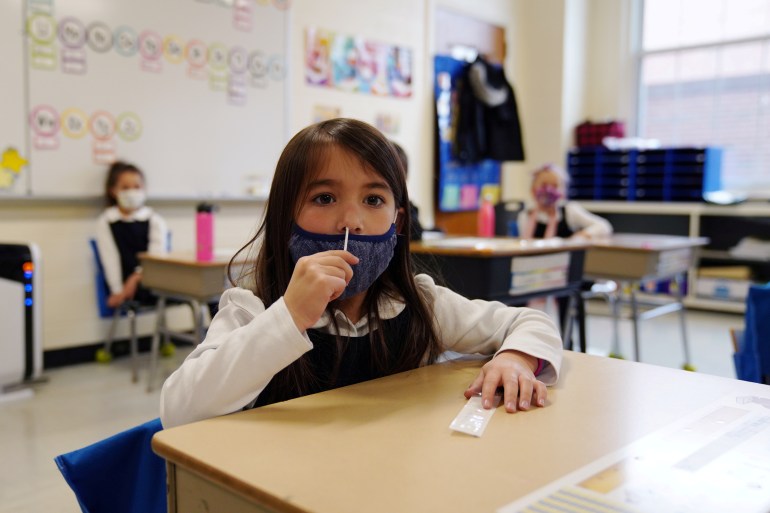Generation threatened as COVID hinders child development: UNICEF
UN agency says closed schools, surging poverty, forced marriages and depression are among factors worsening the problem.

UNICEF has warned that indicators measuring child and adolescent development have all regressed after a year of the pandemic, a setback that threatens to damage an entire generation.
The United Nations agency for children said on Thursday that closed schools, surging poverty, forced marriages and depression are among other factors undermining the development of minors.
Keep reading
list of 3 itemsLives of youth ‘in jeopardy’ in Middle East, North Africa: UNICEF
‘Fantastic step forward’: First COVAX vaccines arrive in Nigeria
“The number of children who are hungry, isolated, abused, anxious, living in poverty and forced into marriage has increased,” Henrietta Fore, the executive director of the UNICEF, said in a statement released exactly one year since the World Health Organization classified COVID-19 as a pandemic.
“Their access to education, socialisation and essential services including health, nutrition and protection has decreased. The signs that children will bear the scars of the pandemic for years to come are unmistakable,” Fore said in the statement.
Faced with such “devastating” effects, Fore urged for children to be placed “at the heart of recovery efforts,” particularly by “prioritising schools in reopening plans”.
Worrying figures
UNICEF cited a series of worrying figures in support of Fore’s words.
While the pandemic has taken a heavy toll on the elderly, children and adolescents under 20 make up 13 percent of the 71 million coronavirus cases reported in the 107 countries that provided age-specific data.
In developing countries, projections show a 15 percent increase in child poverty.

Six to seven million more children could suffer from malnourishment in 2020, an increase of 14 percent that could translate to more than 10,000 additional deaths per month, mainly in sub-Saharan Africa and South Asia.
For 168 million students around the world, schools have been closed for nearly a year. A third of those students do not have access to online education.
As a result of the shuttered schools and worsening economic situation, the pandemic could also lead to the marriage of 10 million children by 2030, adding to the 100 million girls already considered at risk of marriage by then.
At least one in seven children or adolescents has spent the majority of the past year under lockdown orders, and faces increasing anxiety, depression and isolation.
The coronavirus has also led to the suspension of vaccination campaigns against other diseases – starting with measles – in 26 countries, increasing threats to the health of non-immunised people.